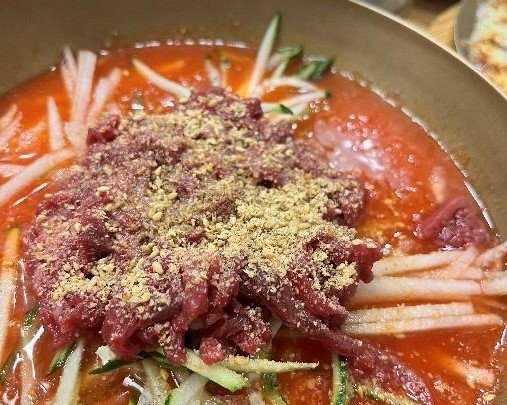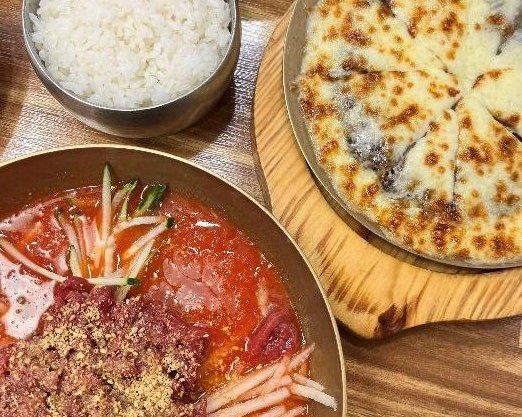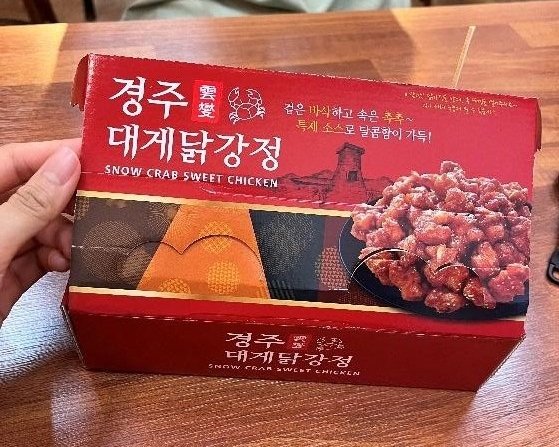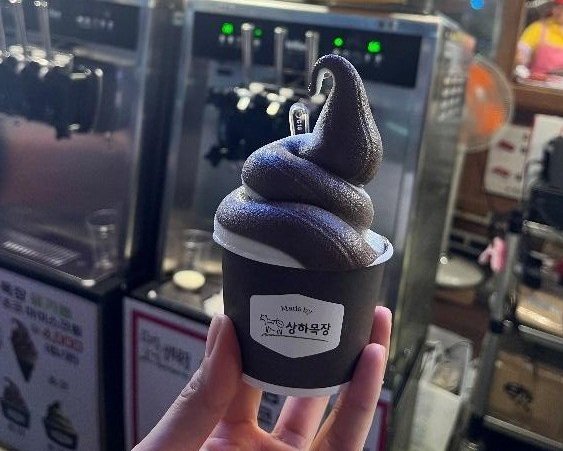A weekend trip to Gyeongju, South Korea
Whether you’re looking for palaces and tombs to explore or simply fancy a delicious meal, check out our travel and food guide for the region of Gyeongju.
Gyeongju Donggung Palace and Wolji Pond. Image: Thuy Bui for Cherry Chu Magazine.
Gyeongju, located in the South-East of the Korean peninsula, was established by King Taejo in around 935 AD. During the Three Kingdoms and the Great Silla Kingdom, Gyeongju stood as the capital city for a millennium. The city holds so much historical and cultural heritage that in 2000, the Gyeongju historic areas were designated as World Heritage sites by UNESCO, making the city famously known as “the museum without walls”.
With its awe-inspiring history and many notable food stops, Gyeongju is the perfect tourist destination.
First stop… coffee!
LLOW — 375-16 Gyeonggam-ro, Gyeongju-si
This cute Hanok design café overseeing Po Mun Lake (보문호) is a very popular stop for both locals and tourists as its located in the Gyeongju Resort area. What seems small from the outside is actually a very spacious café with two floors serving delicious coffee, dessert, and brunch between 10am and 10pm. Outdoor seating is also available, which is great for the warmer months.
LLOW offers a range of hot and cold drinks. Image: Thuy Bui for Cherry Chu Magazine.
Hwangnidan Street (항리단길 ) — 746, Taejong-ro, Gyeongju-si
Hwangnidan Street is an area famous for its range of restaurants, cafés, and shops. Typically each is housed in a hanok (a traditional Korean building from the Joseon dynasty, with the architecture reflecting the period) or inside remaining buildings from the 1960s and the 70s.
What’s on the menu?
Yeonhuiog (연희옥) – 288-1 Hwangnam-dong, Gyeongju-si
During the warmer days, a popular dish to eat is Korean cold soup noodles, called mul naengmyeon (물냉면). The noodles are made with buckwheat and potato/sweet potato starch, with an ice-cold broth traditionally made from the brine of fermented radish water, kimchi, and beef stock.
The dish is usually topped with julienne cut cucumbers and Korean pear, topped with meat and half an egg. The ingredients used are different wherever you go, but the key factor to this particular dish is the ice-cold broth.
Mul naengmyeon and bibim naengmyeon dishes. Image: Thuy Bui for Cherry Chu Magazine.
So the big decision is… spicy or not? Mul naengmyeon or bibim naengmyeon (비빔냉면) is a tough decision! Luckily, I visited the Yeonhuiog restaurant with a friend, so we got the best of both and ordered one of each type. In this spot, the dishes are practically the same; one just came with the spicy sauce and one without! This dish is a must try if you’re in Gyeongju.
Hamyangjip (함야집) — 194-15, Bukgun-dong, Gyeongju-si
My friend took me to his favourite restaurant, Hamyangjip, which he said he will always visit whenever he goes to the area. This famous branch is well known to locals for its yukhoe mulhoe (육회 물회).
Yukhoe (육회) is a beef tartare from Korea. ‘Hoe’ means “raw dish”, and yukhoe is one of the most popular raw dishes in Korea. It’s commonly prepared with raw, lean cuts of beef seasoned with salt, sugar, sesame oil, and pepper, traditionally accompanied with Korean pear. Mulhoe’s (물회) main ingredient is usually raw seafood, however, Gyeongju is famous for yukhoe mulhoe.


Images: Thuy Bui for Cherry Chu Magazine.
The combination of beef tartare with Korean pear and cucumber makes for a delicate, light, and well-balanced sweet and sour broth that is so refreshing: it hits the spot perfectly. The dish came with a side of white noodles which you mix in first then eat, and then a bowl of rice is added afterwards. Rice in cold broth may not sound appealing, but trust me on this one — it’s so good! We chose to order a side of meat with cheese (치즈불고기), which was also delicious.
This restaurant is so busy that we went to put our names down on a waitlist an hour before opening, to get a seat as soon as the serving began. If you don’t, there may be a chance of a two hour wait.
What’s for dessert?
Wolsung Dessert (월성과자점) — 80, Hwangnam-dong, Gyeongju-si
I always find soup noodles don’t keep you full for long, but my friend and I purposely ate light this time because we wanted to get bingsu (빙수). which brings us to the next stop: Wolsung Dessert.
We ordered the shaved ice milk with a scoop of red bean (눈꽃팥빙수), adding nuts/seeds and stick rice cakes filled with red bean, with a side of condensed milk to drizzle on top.
Shaved ice is a staple dessert in Korea, and red bean is a classic sweet topping. Image: Thuy Bui for Cherry Chu Magazine.
I’ve eaten many different kinds of bingsu before — I’ve even had the chance to make my own with toppings of my choice — but this one was special. Maybe it was because I was sitting in a hanok, enjoying the natural scenery and feeling like I was in the middle of a historical drama, but I’m a big lover of nuts and seeds, and red bean is one of my favourite things to eat.
Gyeongju Dakgangjeong (경주 대게 닭강정) — 1072 Poseok-ro, Gyeongjy-si
If your hunger is not quite satiated, how about ending the day with an evening snack of chicken and ice cream? Highly recommended are the Gyeongju specialty, Snow Crab Sweet Chicken (대게 닭강정) from Gyeongju Dakgangjeong, and the ice cream from the machine right next door! Here they use Sangha Mokjang (상하목장) which is a famous organic milk brand in Korea.
Fried chicken and ice cream is a great way to finish a trip! Images: Thuy Bui for Cherry Chu Magazine.
Discovering the history of Gyeongju
9, Gyerim-ro, Gyeongju-si
This area of Gyeongju is surrounded by many attractions, so after dessert we took a leisurely stroll around Daereungwon Tomb Complex (which is free entry) and, for an entry fee of 3000 won, visited Cheonmachong (천마총), a royal tomb discovered in 1970s. This features a painting of a mounted horse, thus, the translated name is “The Heavenly Horse”.
Inside the tomb showcases the famous Gold Crown — believed to belong to either the 21st or 22nd King of the Silla Dynasty — along with many other artefacts. It’s the only tomb of the Daereungwon Ancient Tombs to be opened to the public. Even if you have no interest in history, there’s one thing you should know when visiting the area; each ‘green hill’ you see is actually a tomb/grave for one important individual. The higher the hill, the more important the person.
Later, we decided to go back to Hwangnidan Street to see Gyeongju Donggung Palace and Wolji Pond (경주 동궁과 월지), as well as the Cheomseongdae Observatory (경주 첨성대).
Gyeongju Donggung Palace and Wolji Pond. Image: Thuy Bui for Cherry Chu Magazine.
These spots are most beautiful at night (they were already amazing during the day… I wasn’t sure how much better they could get) so try and visit them later in your trip. The palace, pond, and observatory were the highlights of my trip. Make sure to walk along the stream and cross the lake so you get a head-on view of the palace.
Gyeongju is a great destination all year round, but spring/autumn time are the most popular seasons; spring is cherry blossom season and autumn is pink muhly grass season. Both are perfect for great days out and some beautiful photos.
Whilst the modern capital of Korea is often the life of the party, be sure to add Gyeongju to your travel itinerary, and make the most of this amazing area!
How to get to Gyeongju from Seoul:
KTX → Seoul Central Station to Singyeongju Station (two hours) → Bus to Hwangnidan Street (one hour). The bus stop is located right outside the station.
Edited by Gabii Rayner and Chelsea Cheetham.







